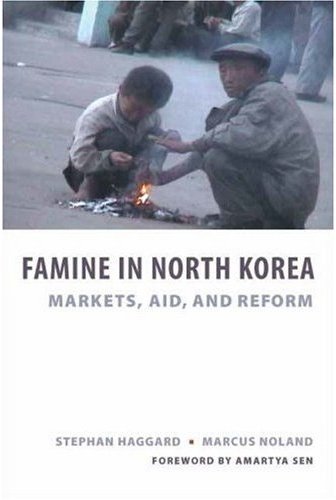Daily NK
Kim Chan Ku
Institute for Far Eastern Studies
9/19/2007
(UPDATE: On Oct. 23, [2008] the State Department blacklisted two North Korean companies, Korea Mining Development Corp. and Korea Taesong Trading Co., for violating U.S. bans on the sale of equipment used in building missiles or other weapons of mass destruction to Iran and Syria. Citation: “North Korean Plane Was Grounded at U.S. Request “, Wall Street Journal, Jay Solomon, 11/1/2008 )
Kimchaek boasts one of the largest steel factories and fishing ports in North Korea especially that of Daesung General Company’s east coast headquarters.
However, at once-famous seaport everything including ship, freezer, packing factory was obsolete and rust. Most of the Soviet-built machines in factories were at least 20 to 30 years old. And there were neither enough spare parts to fix machinery nor job orders, so the factories had stood still for a long time.
I consulted with local North Korean officials in Kimchaek and reached an agreement: ship repair dock will be built in Kimchaek, steel products necessary for building floating dock would be Daesung General Company’s responsibility, and other issues concerning building land factory and management of joint-stock company would be decided in Pyongyang.
Also we finished negotiation over fish export and Pollack fishing by trawler. Thus basic problems were solved.
I came back to Pyongyang on September 30. And another businessperson, Mr. Kim Sung Chan of Pamco Trading, told me his will to invest fifty percent of the capital.
All of sudden, Daesung General Company notified us that among our previous agreements, only the site of repair dock was decided and asked us to wait, promising final decision would delivered in one month.
To start first phase of building factories, it was most critical to have steel products ordered from state. We believed the promise from the North (to take responsibility of providing iron plates) and returned to America. However, after two month had passed, there was no news from Pyongyang. Curious, I called back and was told to visit North Korea as soon as possible.
On December 9, 1989 I arrived at Sun An International Airport. In Pyongyang, vice president of Daesung General Company (president was absent, traveling abroad) said “we asked the state for iron plates, but production plan was omitted in 1990 fiscal year so one more year of waiting is inevitable, or send us steel plates.”
In other words, our business plan was totally embarrassed and we had to make a new one. Again, I conferred with Mr. Kim and found out a solution, which was to buy a used floating dock from an American port. There was a fifty-year old used floating dock in Miami, Florida that we were able to buy. If repaired, it seemed available for another twenty years.
Finally, two obstacles had our plan failed. Firstly, it was supposed take at least three month and five hundred thousands US dollars (twice the price of dock) to convey the floating dock by sea. Secondly, (and more fundamental problem) the US government would not permit to sell the dock to North Korea. We were not even possible to transport the dock to Hong Kong and then to North Korea.
Because acquisition of required steel plate for floating dock was failed ultimately, the daring business had gone nowhere. Wasted much money and more than a year of time, I was so depressed at that time[.]

